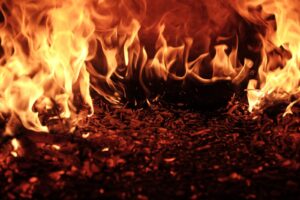Oil and gas flaring releases significantly more methane than believed
The process used to limit natural gas venting is far less effective, and much more damaging than previously understood.
Oil and gas flaring is releasing up to five time more methane into the atmosphere than we understood, according to a new study by the University of Michigan.
Data published in the journal Science has revealed the industry overestimated the effectiveness of the process, which is used to limit natural gas venting, while underestimating its contribution to overall methane emissions, one of the most powerful greenhouse gases and a leading cause of global warming and, in turn climate change.
The issue comes down to when flares are lit to burn off methane. While oil and gas companies have presented modelling based on the idea that flares are active 98% of the time, a survey of three geographical basins in the US home to 80% of the country’s flaring operations found flares go unlit between 3 and 5% of the time, and often run at low efficiency when operational.
Combined, these factors see flare activity fall to 91% of the time. But while these results are troubling, they also present a significant opportunity. Improving these flaring issues could be a huge emissions saving, with the impact equivalent to removing 3m cars from the world’s roads.
‘There is a lot more methane being added to the atmosphere than currently accounted for in any inventories or estimates,’ said University of Michigan Associate Professor of Climate and Space Sciences and Engineering, Eric Kort, the senior scientist behind the new research who works as principal investigator on the F3UEL project.
In order to get the results, which support recent work by energy giant EDF showing 10% of all oil and gas flares are unlit or malfunctioning, researchers took 13 flights in planes equipped with air pollution monitoring technology over the Permian and Eagle Ford oil and gas fields in Texas, and the Bakken oil and gas field in North Dakota.
Flying downwind, crisscrossing direct pathways of air plumes created by flaring, tubes and pumps drew air into the on-board instruments, with lasers scanning a specific frequency to measure the volume of carbon dioxide and methane it contained.
‘This study adds to the growing body of research that tells us the oil and gas industry has a flaring problem,’ said Jon Goldstein, EDF’s Senior Director of Regulatory and Legislative Affairs. ‘The Environmental Protection Agency and Bureau of Land Management should implement solutions that can help to end the practice of routine flaring.’
Last month, Air Quality News reported that oil and gas exploration is falling as global and national targets on emissions draw closer.
Image: Raquel Raclette


















